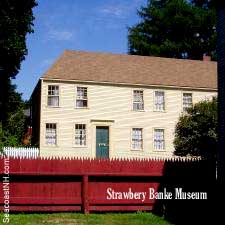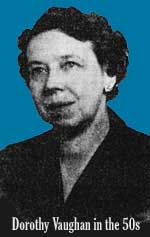|
FRESH STUFF DAILY |
|
|
||
|
|
||
|
|
||
|
SEE ALL SIGNED BOOKS by J. Dennis Robinson click here |
||
Page 1 of 3
Like Paul Revere, historian Dorothy Vaughan woke Portsmouth citizens to an invasion. Progress, she said, was destroying the colonial character. The city responded and preserved over 30 buildings in Strawbery Banke Museum. It all started in June 1957 – or did it? The simple truth is – there is no simple truth.
Time compresses history much the way it compresses coal, but faster. It only takes a few years to squeeze a legend from layers of facts. Like a diamond, the legend is attractive, crystal clear and almost indestructible. Excerpted and adapted from STRAWBERY BANKE:: A Seaport Museum 400 Years in the Making by J. Dennis Robinson. Click below to purchase our book. A Star is Born
Inspired by this speech, local citizens rallied to save more than two dozen colonial buildings from the bulldozers of urban renewal. Puddledock on the Piscataqua River, the site of one of the nation’s oldest settlements, was transformed from a run-down neighborhood into a 10-acre museum. Dorothy Vaughan, who died just shy of her 100th birthday last year, became the first president of the new nonprofit agency. Strawbery Banke Museum thrives and is approaching its own 50th anniversary. That is the short version. Examined closely, legends and diamonds reflect many facets of the truth. Taken at face value, they can blind us to the facts. We may forget, for instance, that Strawbery Banke Museum was a group effort. A lot of people made it happen. This is really a more interesting and complex tale of a town saving itself. A Quick History Lesson. No buildings remain from the small 1630-era colony of settlers who discovered a bank of wild strawberries about two miles in from the mouth of the Piscataqua River. The oldest house in modern Strawbery Banke dates from 1695. Portsmouth became an important world port in colonial days, but it peaked early. The sophisticated aristocratic city faded in the early 1800s. Portsmouth turned to shipbuilding, but never regained its prominence. A nostalgic sense of faded glory, a longing for wealthier days became ingrained in the Portsmouth culture. The city’s fine colonial mansions, weathered and crumbling, served as a reminder of better days gone by. Portsmouth’s South End mirrored the city’s economic decline. The Puddledock waterfront area evolved from a bustling world tradeport to a densely populated working class neighborhood. Water Street became the local "combat zone" as well as its "melting pot" of immigrant arrivals. In the 1950s this neighborhood was officially designated as "blighted" by a federal study and slated to be completely torn down. Instead, for the first time in American history, urban renewal combined with historic preservation Continue with WHO STARTED STRAWEBRY BANKE?
Please visit these SeacoastNH.com ad partners.
News about Portsmouth from Fosters.com |
| Tuesday, April 23, 2024 |


|
Copyright ® 1996-2020 SeacoastNH.com. All rights reserved. Privacy Statement
Site maintained by ad-cetera graphics

 HISTORY
HISTORY





 According to legend, Portsmouth librarian Dorothy Vaughan started Strawbery Banke Museum. She gave a rousing speech to the Portsmouth Rotary in 1957. She warned the business community that the Old Town by the Sea was crumbling. Portsmouth was selling its soul in the name of progress. Bowling alleys, honkytonks and stores with plate glass windows and neon signs were taking the place of grand colonial homes. Pretty soon, she said, Portsmouth would look like Main Street, USA.
According to legend, Portsmouth librarian Dorothy Vaughan started Strawbery Banke Museum. She gave a rousing speech to the Portsmouth Rotary in 1957. She warned the business community that the Old Town by the Sea was crumbling. Portsmouth was selling its soul in the name of progress. Bowling alleys, honkytonks and stores with plate glass windows and neon signs were taking the place of grand colonial homes. Pretty soon, she said, Portsmouth would look like Main Street, USA.














